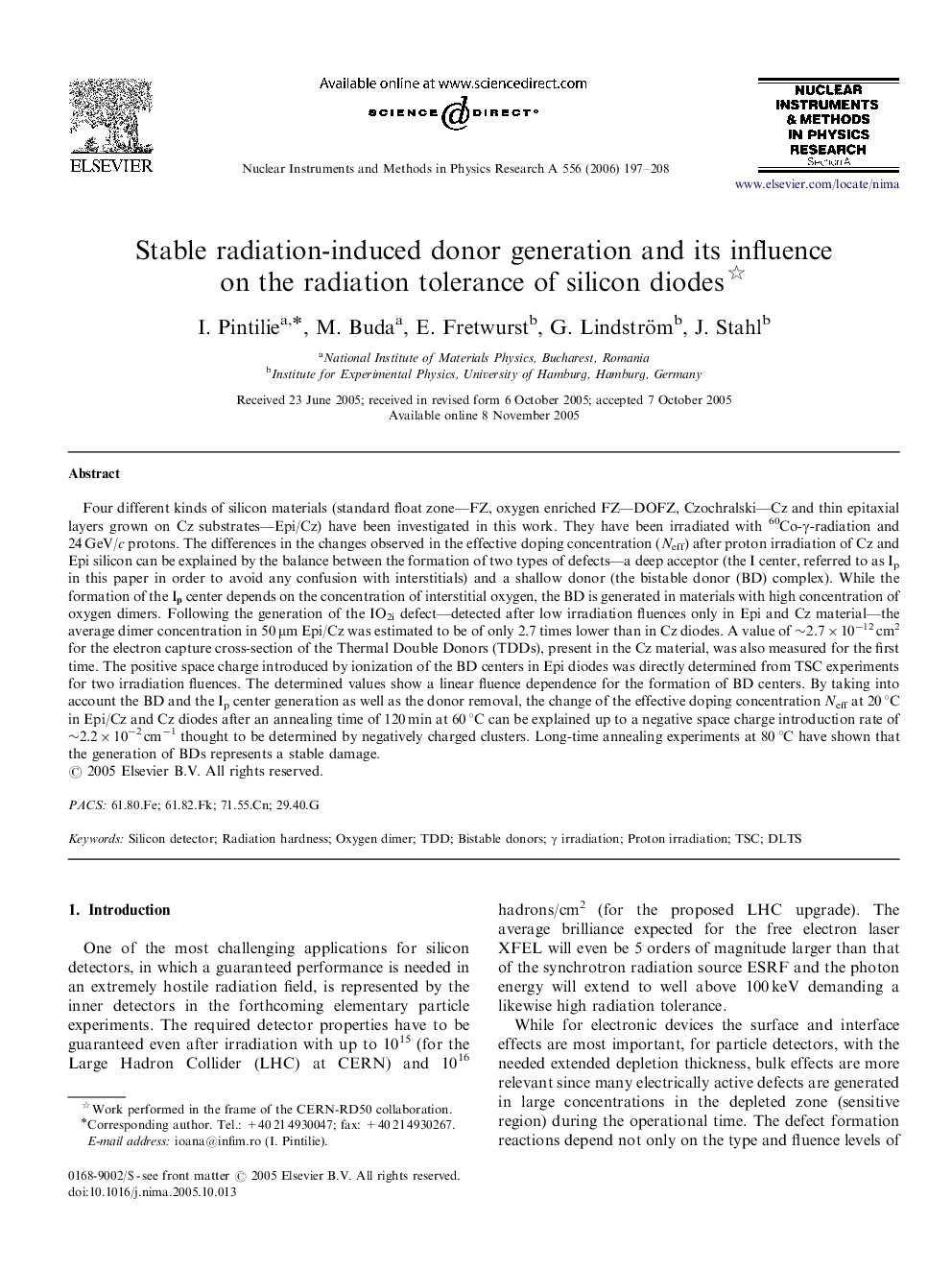| کد مقاله | کد نشریه | سال انتشار | مقاله انگلیسی | نسخه تمام متن |
|---|---|---|---|---|
| 1833515 | 1027549 | 2006 | 12 صفحه PDF | دانلود رایگان |

Four different kinds of silicon materials (standard float zone—FZ, oxygen enriched FZ—DOFZ, Czochralski—Cz and thin epitaxial layers grown on Cz substrates—Epi/Cz) have been investigated in this work. They have been irradiated with 60Co-γ-radiation and 24 GeV/c protons. The differences in the changes observed in the effective doping concentration (Neff) after proton irradiation of Cz and Epi silicon can be explained by the balance between the formation of two types of defects—a deep acceptor (the I center, referred to as Ip in this paper in order to avoid any confusion with interstitials) and a shallow donor (the bistable donor (BD) complex). While the formation of the Ip center depends on the concentration of interstitial oxygen, the BD is generated in materials with high concentration of oxygen dimers. Following the generation of the IO2i defect—detected after low irradiation fluences only in Epi and Cz material—the average dimer concentration in 50 μm Epi/Cz was estimated to be of only 2.7 times lower than in Cz diodes. A value of ∼2.7×10−12 cm2 for the electron capture cross-section of the Thermal Double Donors (TDDs), present in the Cz material, was also measured for the first time. The positive space charge introduced by ionization of the BD centers in Epi diodes was directly determined from TSC experiments for two irradiation fluences. The determined values show a linear fluence dependence for the formation of BD centers. By taking into account the BD and the Ip center generation as well as the donor removal, the change of the effective doping concentration Neff at 20 °C in Epi/Cz and Cz diodes after an annealing time of 120 min at 60 °C can be explained up to a negative space charge introduction rate of ∼2.2×10−2 cm−1 thought to be determined by negatively charged clusters. Long-time annealing experiments at 80 °C have shown that the generation of BDs represents a stable damage.
Journal: Nuclear Instruments and Methods in Physics Research Section A: Accelerators, Spectrometers, Detectors and Associated Equipment - Volume 556, Issue 1, 1 January 2006, Pages 197–208